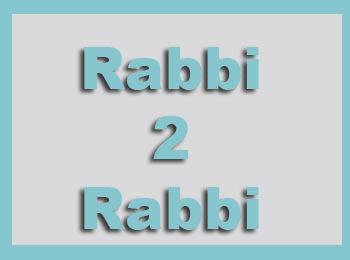From King Solomon to the talmudic sages, Jews have a long history of retreating into nature in search of spirituality. But how do we transfer that awe back to the synagogue?
Rabbi N. Daniel Korobkin
Beth Avraham Yoseph Congregation, Toronto
Rabbi Lisa Grushcow
Temple Emanu-El-Beth Sholom, Montreal
Rabbi Grushcow: A boy went into the woods. His father, following after, asked him what he was doing.
“I’m going into the woods to pray,” his son replied.
“But you don’t need to go into the woods for that,” his father said. “Don’t you know that God is the same everywhere?”
“Yes,” said the boy, “but I’m not.”
I’m writing from Camp George, the Union for Reform Judaism’s summer camp in Parry Sound, Ont. Ever since coming back to Canada from Israel, I’ve spent time on the faculty at camp. I love being with all the kids and being part of experiential Judaism, outside the walls of the synagogue, and I really value time with colleagues. As the above story suggests, it’s good for my spirituality.
I’m curious whether there are places outside the synagogue that are like this for you. And as our minds turn to preparing for the High Holidays and long hours in shul, I wonder if you have ideas for how to bring the outside in.
Rabbi Korobkin: Jews have been retreating to the outdoors and nature for centuries to find inspiration.
King Solomon wrote extensively in Proverbs about observing wildlife and learning life’s lessons from even the smallest of insects. The talmudic sages remarked that so many of our biblical figures were shepherds, since working outdoors gives a person the opportunity to contemplate the wonders of God’s world.
In the 18th century, Rabbi Nachman of Breslov, inspired by Isaac, taught about the importance of “hitbodedut,” meditating alone in the forest in order to reach a higher level of spirituality. The Talmud also teaches about the importance of a synagogue having windows, so that a person may “look out and see the sky, and thereby be humbled in his heart.” The very blue colour of our tzitzit is meant to remind us of both the seas and the sky, so that we may ponder God’s seat of rulership that is above it all.
In the past, when I was looking for inspiration for a High Holidays sermon, I’d go to a nearby park where there was a running brook. Sometimes, just listening to the water would inspire me to collect my thoughts.
Looking out at the ocean, gazing up at the stars, looking out over the snow-capped mountains – all these remind us of our smallness amidst the vastness of this beautiful and complex world.
Rabbi Grushcow: This spring in Israel, I was struck by the intense blue of the synagogue interiors in Safed, so evocative of the sky. Similarly, in the sanctuary of our temple in Montreal, our eyes are drawn upward to the sky through the windows at the top of the ceiling. Like you, I’ve always loved the teaching that a synagogue must have a window. It reminds me that what we do inside our walls is connected to the world outside them, and that the awe we feel outside can be brought in.
This year, we are trying something new for the quiet moments of Yom Kippur afternoon. We will have a range of different opportunities to learn together, talk with one another, and pray. One of the options will be to go for a meditative walk outside.
I love the story of Rabbi Shimshon Raphael Hirsch, who is reported to have said, “When I stand before God, the Eternal One will ask me: Did you see My Alps?” For those who will spend long hours in the pews with us in September, I hope we can convey that sense of spirituality, connection, and awe.
Rabbi Korobkin: And yet, after all’s been said about the majestic outdoors, the four-walled and roofed synagogue is still designated as the optimal place for prayer. The Talmud says this is because we should temper our wonder and inspiration from our great expansive world with the limiting confinement of a simple room.
Great rabbis used to pray facing the wall so that they could feel that sense of intimacy, that it’s just You and me, God, here and now. Prayer is thus a juggling act, like so many other aspects of Judaism, between awe and love of God. I suppose that’s why we don’t pray regularly outside.
I hope the weather is great for your congregation’s Yom Kippur afternoon walk.
